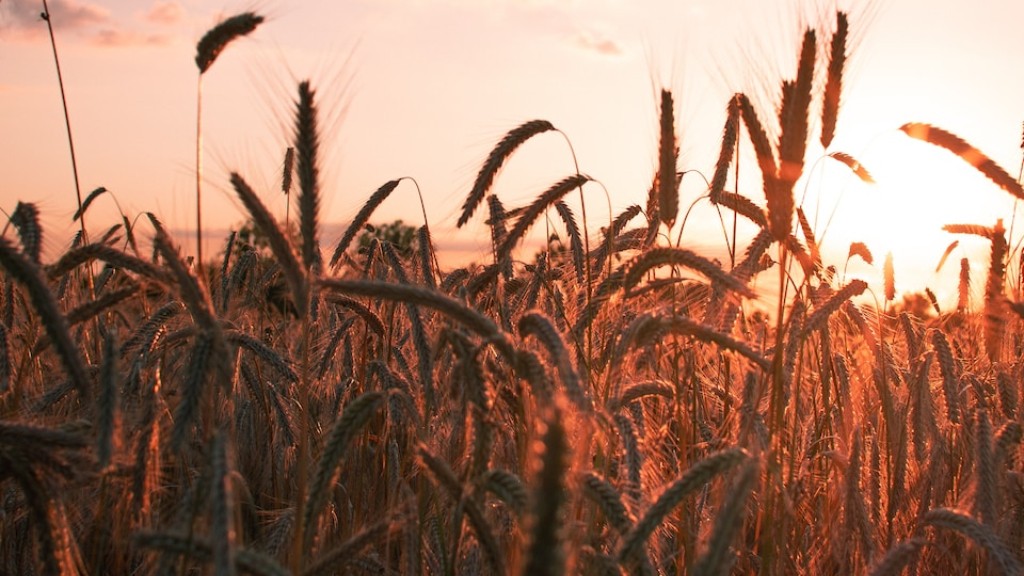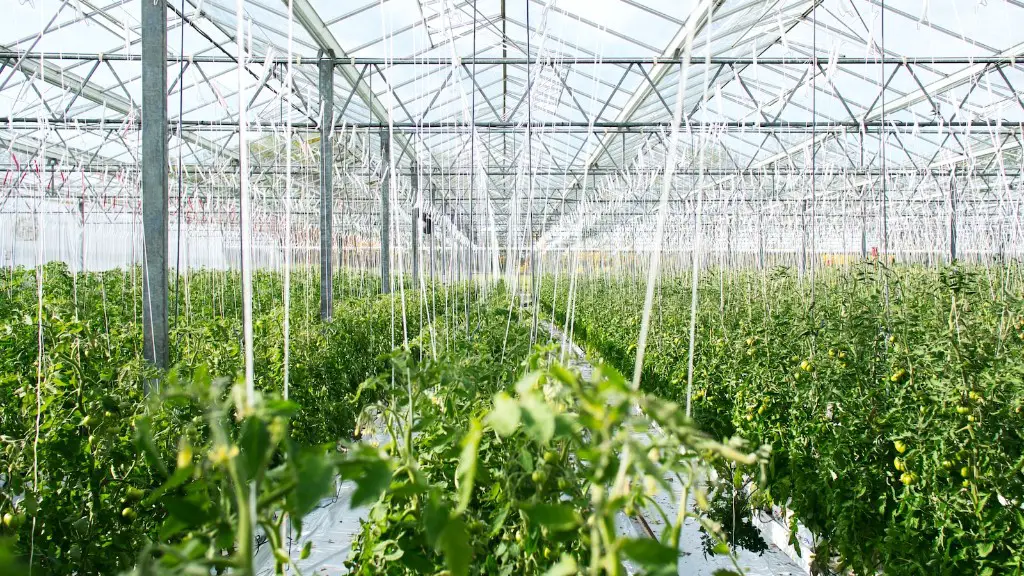Fertilizers are essential inputs to increase crop yields and produce quality produce. They are used in the cultivation of agricultural crops to increase the plants’ photosynthesis efficiency, to improve their nutrient uptake, to increase their resistance to disease, and to increase their productivity. Fertilizers are essential to modern agriculture as they provide nutrients needed for healthy, productive plants. Without them, farmers would not be able to produce the food needed to feed an ever-growing population.
Using fertilizers as part of a balanced crop fertility program aids in providing optimum yields and quality of crops. In addition to providing nutrients, fertilizers help plants absorb and utilize these nutrients more effectively. Fertilizers can also improve soil structure and make clay soil more friable, thus allowing better access for plant roots and water in heavier soil.
Fertilizers provide essential macronutrients such as nitrogen, phosphorus and potassium, and micronutrients such as zinc, iron, boron and manganese, which are required for healthy root and foliage development. Fertilizers also help in increasing soil pH which can increase the availability of essential minerals to the plant.
When used properly, fertilizers can be useful in promoting soil fertility, decreasing soil erosion and improving water infiltration. In addition, they enable more efficient usage of water resources, reduce water pollution caused by runoff and help to preserve native topsoil.
Fertilizers have been used in agriculture for centuries, and their use has become widespread in recent years. Today, farmers can choose from an array of fertilizer products. Different types of fertilizers are available for particular crops, in order to target the particular nutrient needs of each variety.
To get the most out of fertilizer products, it is important to understand the ingredients, how to apply them and what the intended benefits are. An effective fertilizer program, tailored to the specific crop needs and soil conditions, will result in improved yields and greater crop quality. With this in mind, fertilizers can be an important component of sustainable farming and a key component of successful agricultural operations.
Methods for Applying Fertilizers in Agriculture
Applying fertilizers to crops is a precision endeavor that can take many forms. Fertilizers can be applied to soil before planting, added to water to be applied as a solution or irrigated on to the field, or spread on top of the soil as a dry application. There are a number of factors farmers must consider when making decisions on how to apply their fertilizer.
In most cases, farmers will opt to use a combination of the methods mentioned above. Fertilizers can be spread on the surface of the soil, tilled into the soil before planting, or, for crops planted in standing water, applied through irrigation. Depending on the type of fertilizers used, and the crop needs, farmers can also mix fertilizer with other materials such as lime, sulfur, gypsum, sawdust, and other organic matter.
In any case, it is important that the fertilizer be incorporated into the soil with a plow, disk, drag harrow, or other equipment prior to planting. This allows the fertilizer to mix with the soil properly and make its nutrients accessible to the plant. Incorporating the fertilizer also prevents it from being leached away by rain or runoff.
Fertilizer can also be applied as side- or top-dressing at a different stage of the crop growth cycle. This is a technique that can be used to supplement the soil with nutrients and help reduce the amount of fertilizer needed at the beginning of the season.
Finally, in some cases, fertilizers can be injected directly into the soil. This is generally done with crops that require exact measurement of nutrients in the soil, such as high-value crops or specialized crops. This process eliminates the need to incorporate the fertilizer into the soil before planting.
The Benefits of Fertilizers
Fertilizers provide a number of benefits for farmers. First, when used in combination with other inputs such as crop rotation, cover crops, and careful soil management, fertilizers help create a balanced soil fertility program that supports healthy crops and high yields. By providing an essential source of macronutrients and micronutrients, fertilizers help supplement the soil and enable optimal plant health.
Second, fertilizers can improve soil structure, reduce compaction, and allow better access for roots and water. By providing the proper nutrients, fertilizers can also help improve yield and quality, reduce losses from plant diseases, and increase the efficiency of water use.
Third, fertilizers are an important component of sustainable agriculture. By properly balancing fertilizer rates with timely applications and other management practices, farmers can ensure that their soils have the nutrients necessary for healthy crops and high yields.
Finally, fertilizers can help reduce the environmental impact of agricultural operations. In addition to reducing the amount of water needed for crops, fertilizers can reduce soil erosion, improve water infiltration, and reduce pollution caused by runoff.
The Importance of Nutrient Management
Due to the complexity of soil nutrients, macronutrients, micronutrients, and other inputs, nutrient management is essential for finding the right balance of fertilizers. Proper nutrient management involves making decisions on the types and amounts of fertilizers to be used, when they should be applied, and in what form.
By selecting the right fertilizers and using appropriate amounts and types of nutrients, farmers can ensure that their crops will receive the amounts of nutrients needed for optimal growth. Additionally, nutrient management is key for ensuring that nutrients are not over-applied and wasted, to help reduce potential environmental impacts.
Nutrient management plans should be developed and tailored to the specific crop and field needs. This includes considering soil tests, yield goals, and pest management practices, as well as an understanding of the environmental factors, crop needs, and soil types.
Finally, nutrient management plans should be constantly monitored and adjusted as needed. By staying on top of soil nutrient levels and crop needs, farmers can ensure that their fertilizers are being used efficiently and effectively.
Types of Fertilizers Available
Fertilizers come in a variety of forms, either synthetic or organic. Synthetic fertilizers are produced in a laboratory and are designed to be used in specific agricultural applications. These fertilizers are usually tailored to certain crop and soil needs, and can provide uniform application of specific nutrients needed by the plant. Synthetic fertilizers often contain a combination of macronutrients and micronutrients, and can also be designed to provide longer-term benefits.
Organic fertilizers, on the other hand, are derived from natural sources such as animal byproducts, compost, and manure. Organic fertilizers not only provide essential nutrients to the plants, but can also help to improve soil health by adding organic matter and beneficial bacteria to the soil. Additionally, organic fertilizers can provide slow-release benefits, reducing the need for reapplication.
Regardless of the type of fertilizer used, farmers should take the time to understand their soil needs and select the right fertilizers for their crops. By selecting the right fertilizers, understanding how to apply them, and tailoring their application based on soil and crop conditions, farmers can ensure their crops receive the essential nutrients they need to produce healthy, high-yielding crops.
Managing Fertilizer Costs
Fertilizers can be expensive, and as such, it is important for farmers to understand the costs associated with buying and using fertilizers. It is important to take into consideration the total cost of fertilizer applications when budgeting. This includes direct costs such as the purchase price of the fertilizer, as well as indirect costs such as the cost of labor and equipment used for application.
Additionally, it is important to understand the cost savings associated with the use of fertilizers. Proper fertilizer management can help reduce losses from plant diseases, improve yield and crop quality, and reduce the amount of water needed for crop production. This can result in significant cost savings, and help farmers make the most of their agricultural investments.
Finally, understanding the potential returns associated with the use of fertilizers can help farmers make more informed decisions on when and where to apply their fertilizer. By understanding the expected yields, crop quality, and financial returns from the fertilizers they use, farmers can make the most of their fertilizer investments.
Conclusion
Fertilizers are a key component of modern agriculture, and are essential for producing healthy, high-yielding crops. When used in combination with other inputs, fertilizers can be used to improve the quality of crops and soil, and to increase yields. Proper nutrient management is essential for finding the right balance of macronutrients and micronutrients, and for making the most of fertilizer investments. Finally, understanding the types and costs of fertilizers available can help farmers make more informed decisions on when and where to apply their fertilizer.





